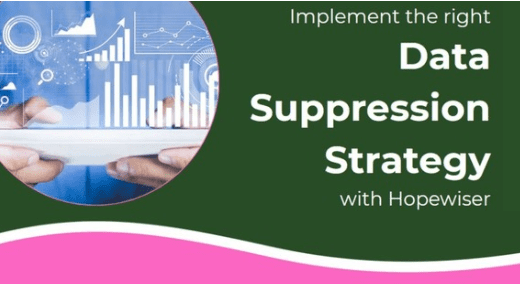Background
Each financial institution has to deal with large, diverse and complex sets of data that can be used to provide finance solutions to their customers and tackle business challenges. The financial services sector, by nature, is one of the most data-intensive sectors, representing a unique opportunity to process, analyse, and leverage the data in useful ways.
Today, customers are at the heart of the business around which data insights, operations, technology, and systems revolve. This means data initiatives are needed by banking and financial companies which focus on customer analytics to provide better service to customers. In addition to managing this large amount of data, Financial organisations must fulfil the Fundamental Review of the Trading Book (FRTB) stringent regulatory requirements – developed by the Basel Committee on Banking Supervision (BCBS) – that govern access to critical data and demand accelerated reporting. Data privacy is another major concern tied to the implementation of cloud computing technologies.
In this blog we will look at the importance of data accuracy in financial services and what you need to do about it.
1. Consolidate your data silos to create a Single Source of Truth
The inability to connect data across departments and organisations is a major business intelligence challenge, leading to complicated analytics and standing in the way of data initiatives and customer experience. Below, are three advantages of creating a single source of truth:
a. Improves Customer Experiences
Through natural data decay and the numerous touch points that consumers have with your business, data can become duplicated. If you have more than one address for a customer, how do you know which one is correct? If you incorrectly deliver marketing or important documentation, your customers are likely to lose faith in you. Considering that 89% of customers stop doing business with an organisation after a bad experience, consolidating your database and ensuring you hold the correct data through regular data cleansing will help you improve customer experience. By understanding where a person is within each dataset, then, even if data is not stored centrally, an update can easily be transmitted around to all other datasets, even if these hold slightly different details, for whatever reason.
b. Drives Revenue Growth
Consolidating your data will help your business achieve that all-important single customer view, which in turn will improve your customer targeting. Tailored messaging will ease the procurement of new business because personalisation can drive between 5 and 15% of revenue growth for financial services firms. Relations with your current customer base will also improve as you will gain a complete understanding of each individual contact and their relationship with your organisation. A single customer view also improves business analysis.
c. Increases Security
PwC’s 22nd Annual Global CEO Survey revealed 49% of respondents put data inadequacy down to the fact their company data is siloed. Not only does this affect integrity, but it can also hinder security if disparate data is locked away in numerous silos. If security personnel don’t have access to company databases this can lead to critical errors such as data breaches. According to Forbes, the Banking industry was the most breached industry in 2023. Consolidating your siloed data into a centrally controlled master file will enable sufficient monitoring of your database, thus increasing security.
For more information on Single Source of Truth download our FREE Guide.
2. Reduce Fraudulent Applications & Payments
Unauthorised financial fraud losses across payment cards, remote banking and cheques, totalled around £708 million in 2024. The banking and finance industry is working hard to protect customers from fraud and scams. However more can always be done. Research conducted by the Association of Certified Fraud Examiners suggests organisations using proactive data monitoring can reduce fraud loss by an average of 58%.
With that said, find out below, ways in which your business can reduce the risk of fraud with data:
a. Address Verification
26% of respondents to a survey said having accurate data was one of their biggest challenges when it comes to making use of big data. 41% also claimed no one was responsible for data management within their organisation. Something as simple as verifying a person’s identity through an address and postcode finder can significantly improve the accuracy of data and thereby reduce the risk of losses due to financial crime.
“We have found that if the address contains even just a small error, when applying for credit for a caravan purchase, Credit Agencies will reject the application, this can result in the Park losing out on tens of thousands of pounds of revenue – due to just an error on an address! Using Hopewiser’s Address Lookup ensures that all address details captured are matched against Royal Mail Postcode Address File so we know this problem can be easily solved.” Andy Cressey, National Sales Manager, ParcVu.
The Royal Mail Postcode Address File (PAF) contains the UK data of over 30 million postal delivery addresses, 1.8 million postcodes, and 1.4 million business names. Using address validation that is powered by PAF will help you correctly identify your customers, thus improving fraud prevention.
b. Additional Datasets
Outsourcing an address validation solution and purchasing additional datasets, such as Multiple Residence and Not Yet Built, will greatly reduce the risk of fraudulent activity with the addition of more detailed address data options. These datasets hold an additional 800,000 and 500,000 records respectively, making online transactions much easier as well enabling a more efficient mail delivery.
3. Enriching Your Data with Location data
Geographic data enrichment involves adding postal data or latitude and longitude to an existing dataset that includes customer addresses. This enrichment supports location analytics and intelligence. Adding this insight into your data can be beneficial. For example; targeted regional marketing campaigns offering the most appropriate insurance or mortgage deals relevant to location. Ensuring your postcode data is accurate against the Royal Mail’s Postcode Address File (PAF) and using Geographic data in addition to the PAF, can enrich address data for example with Unique Delivery Point Reference Numbers (UDPRN) or longitude and latitude data. You can link the postcodes in your database to a wide variety of administrative, health, and other geographic areas in which each postcode falls.
Case study example
In December 2020, addresses from over 3 million insurance policies held by a major Insurance Company were processed through Hopewiser’s automated bulk data cleansing service. By appending a grid reference, our insurance client was able to offer the most up-to-date competitive insurance rates to its customers based on their location. This had the added benefit of improving customer experience and satisfaction.
, updated 7th May 2025.
Topic: Data Cleansing






